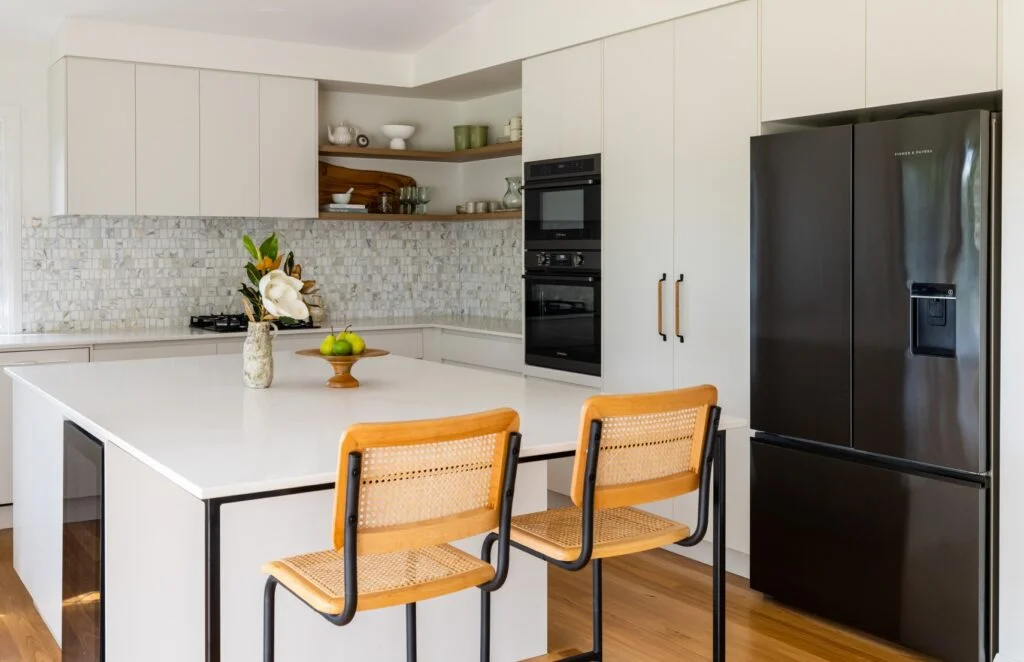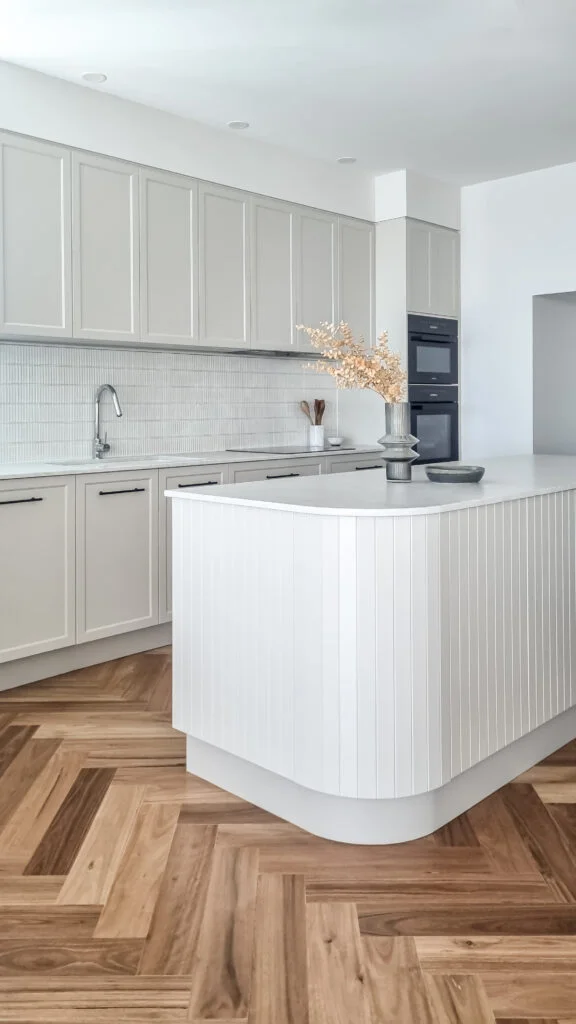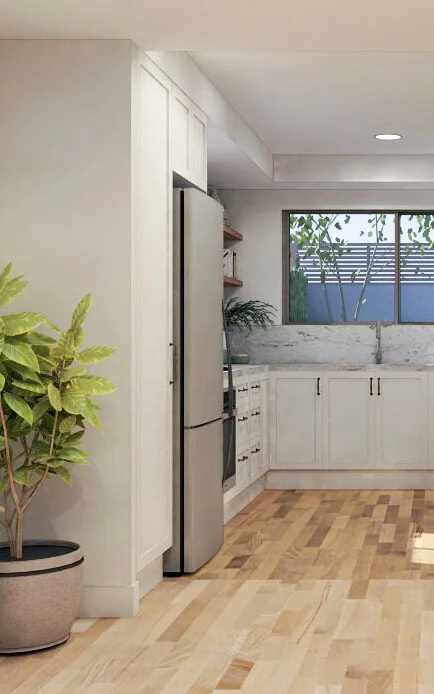The essential kitchen layout details we look at as interior designers
Planning the layout of your new kitchen is a critical step in creating a functional and visually appealing space. The right layout can optimize workflow, maximize storage, and enhance the overall efficiency of your kitchen. We understand the importance of a well-planned kitchen layout.
Consider the Work Triangle:
First things first, let’s talk about the work triangle. It’s a basic principle in kitchen design, and if you’ve done any research into kitchens you’re sure to come across this term! It involves placing the three main work areas (the sink, stove, and refrigerator) in a functional layout. The idea is to optimize movement and minimize unnecessary steps while cooking. It’s important to keep in mind that the distance between these key elements should neither be too close nor too far apart, creating a seamless workflow in your kitchen. But don’t worry, the triangle can be adjusted to fit your space! It doesn’t need to be a physical triangle, but a layout that will give you the most functionality within your floor plan.



Analyze Your Space:
Next, analyze your kitchen space. Whether it’s U-shaped, L-shaped, or galley-style, understanding the shape of your kitchen will help you make informed decisions. It all plays a role when selecting cabinetry, appliances, and other elements to maximize functionality. Your kitchen shape can have a huge impact on what is achievable in your space. It affects the different zones and how they work together.
Determine Zones:
Now, let’s divide your kitchen into specific zones based on their intended use. Identifying different zones such as preparation, cooking, cleaning, and storage can greatly enhance functionality. Make sure each zone has easy access to the necessary tools and appliances. For example, locate your prep zone near the sink for easy clean up.
Prioritize Storage Solutions:
When planning your layout, ample storage is crucial for a well-organized kitchen. So, prioritize storage solutions that cater to your specific needs. Optimize cabinet space with pull-out drawers and adjustable shelving to maximize storage capacity and accessibility. While customized storage options can help keep your kitchen clutter-free, we are always careful not to take customisation too far. You will spend a lot of money buying specialty storage inserts, but if you change your kitchen items they may no longer work for you. There’s a balance between flexibility and customisation!


Incorporate an Island Bench:
Finally, if space allows, consider incorporating an island bench into your kitchen layout. Islands provide additional countertop space, seating options, and extra storage opportunities. They can also serve as a focal point and create a natural flow between different kitchen zones. If an island isn’t an option for you, a peninsula (breakfast bar) can offer similar benefits, but are attached to existing cabinets or walls. This can make them a suitable option for smaller kitchens or those with limited space.
Remember, planning your new kitchen layout requires thoughtful consideration to ensure a functional and visually pleasing space. Remember, an experienced interior designer can see your space with fresh eyes. We’ll often spot a solution you wouldn’t have though of!
If you would like to learn more about our online kitchen design services check out further details here.

